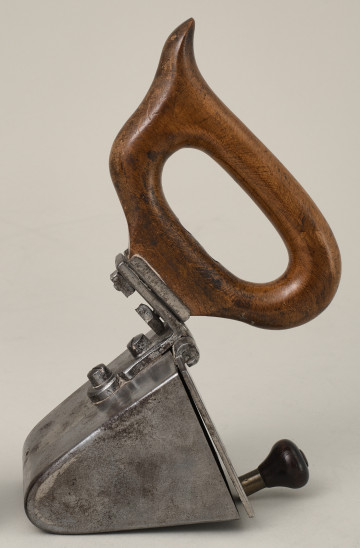
Fireplace tongs
20th century
Castle Museum in Łańcut
Part of the collection: Metals
The history of the andiron begins in the middle ages. They were originally long, wrought iron rods with a hook, to hang a cauldron above the fire. In the 14th century this rod was expanded to include a stem running into the fireplace to hold the pieces of wood, and in the 16th century the practical function (holding of logs) was amended by a decorative function. The name, in Polish – wolf – stems from English (fire dog) and French. The most commonly used material for such holders was wrought iron, even though silver and later bronze, frequently gilded, emerged at the end of the 17th century. The andiron form changed along with fashions and styles, from very simple to very decorative ones. The discussed andirons stem from the Potoccy collection from the 18th century. They are made up of a fireplace hearth, rectangular, resting upon four feet, with the two front ones turning into decorative rising rods. At the front, a decorative rococo part, of bronze, of a large rocaille and a free-sitting cupid at the centre; he is almost naked, wearing just a loincloth.
Author / creator
Dimensions
height: 30 cm, width: 44 cm
Object type
Metals
Technique
cast, metallurgical
Material
brass, iron
Creation time / dating
Creation / finding place
Owner
Castle Museum in Łańcut
Identification number
Location / status

20th century
Castle Museum in Łańcut

20th century
Castle Museum in Łańcut

18th century
Castle Museum in Łańcut
DISCOVER this TOPIC
Museum of King Jan III's Palace at Wilanów
DISCOVER this PATH
Educational path